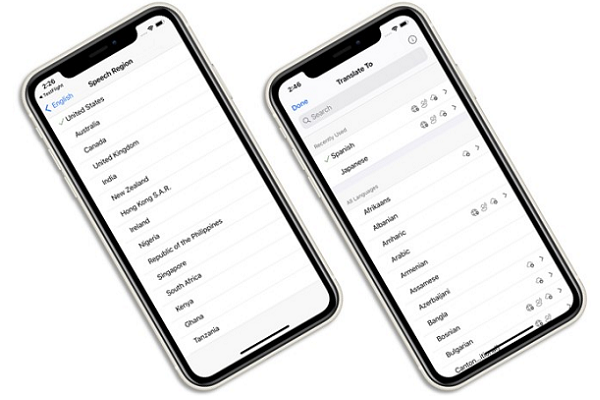Microsoft Translator Adds Regional Accents
 Microsoft has augmented its Translator app with regional accents for the first time. The Speech Regions feature lets users adjust how the text-to-speech voice pronounces words to match different common variations based on location.
Microsoft has augmented its Translator app with regional accents for the first time. The Speech Regions feature lets users adjust how the text-to-speech voice pronounces words to match different common variations based on location.
Accent Option
The iOS and Android versions of the Microsft Translate app now include sub-menus under certain languages that allow users to pick out the accent they want to hear when the translated text is spoken. Users pick a speech region and can decide among the available voices that speak that language with the chosen accent. The app’s interface has also been updated to make it easier to sort through the available languages, including the new accent options. Some languages have more choices than others, of course. English comes in American, British, Australian, Canadian, Irish, and Indian flavors, while Spanish has voices that sound native to Mexico and Spain, although the regions include every country where Spanish is a dominant tongue. Not all of the 90 languages have multiple accents, at least not yet.
“The way a single language is spoken can often differ from region to region. A language like Spanish, for example, is spoken in Europe but also across North and South America. The way a Spanish speaker from Spain would pronounce a word or phrase would likely be very different from the way a Spanish speaker from Mexico would pronounce the same word or phrase,” Microsoft explained in a blog post. “You can now select which region you want to hear the playback of your translation. This is great for travel—if you wanted to play a passage to someone in the country you’re travelling in, you can play it in their native accent. It is also great for language learning—you can repeat and practice learning words and phrases in the regional accent you are most interested in.”
Translation Time
Translations are recognized by most speech AI developers as a very popular use case, and competition to offer the best and most flexible translations is on the rise. Google recently released Translatotron 2.0, a new version of its model that recreates a speaker’s voice in a different language, which will likely inform future versions of Google Translate and its real-time transcription and the instant translation feature for Google Assistant on Android. Alexa has real-time translation as a feature as of late last year, expanding the multilingual mode Alexa has been opening up to new languages. Translation services are also what motivated Zoom to acquire Kites as it works to make enterprise communications as universal as possible, without the limitations of language holding them back.
Follow @voicebotai Follow @erichschwartz
Google’s Translatotron 2 Improves Linguistic Shifts Without the Deepfake Potential
Facebook Shares 100-Language Translation Model, First Without English Reliance








